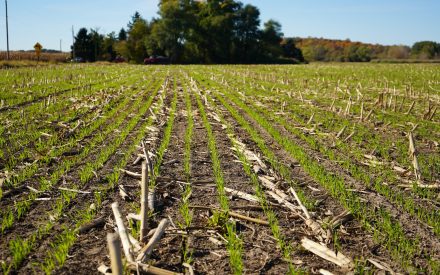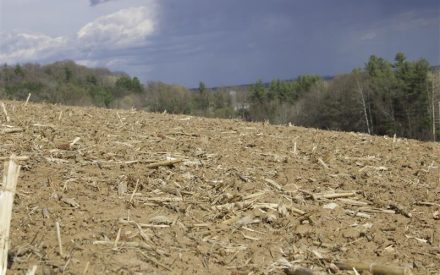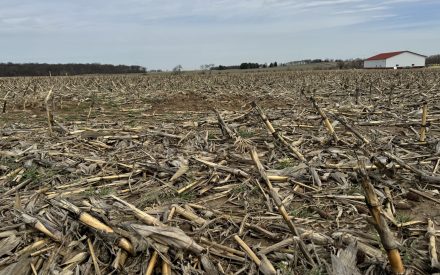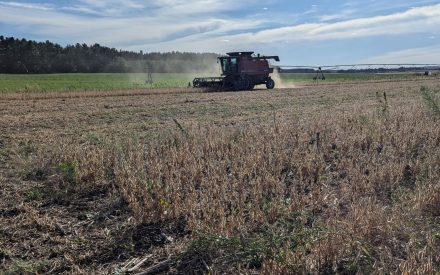Introduction
Extreme weather is nothing new in Southwest Wisconsin. However, the frequency at which communities and farmers experience this extreme weather in the form of flooding has increased.
According to the Wisconsin Initiative on Climate Change Impacts (WICCI), storms that drop 4 inches of rain in 24 hours or less will double by the year 2060 in parts of Wisconsin. These kinds of extreme events go above and beyond what the infrastructure in southwest Wisconsin can withstand. The West Fork of the Kickapoo River and Coon Creek watersheds have suffered badly because of this discrepancy. These watersheds are home to a number of earthen dams – five of which failed in 2018 due to the force of unprecedented amounts of water, the age of the dams, and the fact that dams were built into fractured sandstone rock that is common to the area. The owners of the dams: local governments, have had to make difficult decisions regarding 23 of the existing structures that, should they fail like the other five, present a greater hazard compared to the flood protection they currently provide.
While dams are an engineering marvel that can provide safety and protection for many acres of land downstream, there are other ways to slow water during extreme rainfall events, such as natural infrastructure. Furthermore, the financial burden of dam renovation falls on local governments, often in rural areas, while natural infrastructure is cost effective and disperses both the benefit and the financial burden.
Natural Infrastructure Defined
Practices that reduce downstream flooding by either increasing the total volume of water that is held by the soil, the speed at which water infiltrates, or which retain water temporarily can be considered natural infrastructure. In southwest Wisconsin, known for its steep grades, prioritizing natural infrastructure could help reduce flooding downstream. In-field practices that increase the soil’s ability to hold onto water, (infiltration) or edge-of-field practices that retain water can aid in flood reduction and reduce soil and nutrient loss.The benefits of natural infrastructure compared to large dams includes lower initial costs and less land use changes for agriculture production. However, the cumulative impact depends on how many acres are managed in this way.
In-field and Edge-of-field Practices
No-Till Farming
No-till farming improves water infiltration and storage by increasing organic carbon, which increases soil pore size and connectivity. Water moving more quickly through the soil column during rain events reduces runoff. No-till and reduced till also benefit water quality by reducing the amount of soil lost from fields, which contains excess nutrients like particulate phosphorus. The soils of southwestern Wisconsin are majority well-drained, so no-till systems can effectively reduce runoff during the non-frozen season, as shown in the figure below, created using UW-Discovery Farms data.
Cover Cropping
Cover crops increase the infiltration of the soil, allowing it to absorb rainfall more quickly before it becomes saturated and increase the soil’s water holding capacity, increasing the overall volume of water the soil can hold before a runoff event occurs. This increased time to runoff is extremely important to the reduction of flash flooding and peak flow. A cover crop planted after corn silage in southern Wisconsin reduced runoff volume by 50% compared to no cover crop (Siller et al, 2016). By reducing runoff, overall transport – a key to nutrient and soil loss – is reduced, which benefits water quality by reducing the nutrient and soil load to water bodies. Furthermore, a cover crop, which provides cover during the shoulder seasons, can immobilize N and P February, March and April, when the majority of runoff occurs.
Vegetated Buffers and Filter Strips
Vegetated buffer or filter strips reduce runoff by accelerating storage, evapotranspiration, and infiltration, Incorporating a perennial practice like these can increase infiltration rates by 59% (Basche and DeLonge, 2019). Buffers and filter strips are also very stackable. The overall reduction in soil and nutrient runoff can be greater than if each of the practices were applied on their own. Stacking conservation practices is an extremely valuable approach to water quality issues in agriculture.
Grassed Waterways
Water often chooses its own path through a field. When a producer makes the choice to not till that path or to plant it to grass seed, that becomes a grassed waterway. Data from ridges in the Rullands Coulee watershed, in the Driftless area, showed greater infiltration rates in grassed waterways than in other land uses, including corn, pasture, alfalfa, and fallow fields (2020 Water Resources Management Practicum Report). Discovery Farms data from Kewaunee County also paints a very clear picture that grassed waterways can reduce the volume of soil leaving a field.
Structural Conservation Practices
Natural infrastructure has the potential to significantly reduce flooding and improve water quality, but their impact depends on management choices made every year. Grade stabilization structures and wetland restoration are two structural conservation practices that have higher initial input and require maintenance, but can have a large impact on flood control with a single action. The figure below illustrates the peak flood reduction benefit of structural water retention practices, though this idea can also be applied to the green infrastructure described earlier.
(Reppert, et al, 1979)
Grade stabilization structures and retention ponds slow water down after it has left the field. These structures are very effective at controlling erosion and reducing peak streamflow by lengthening discharge time. This practice can easily be combined with an in-field or edge-of-field practice.
Wetlands function similarly; they retain surface water and allow a small amount of that water to discharge over time. However, wetlands also contain characteristic vegetation, which contributes to both flood control and water quality benefits. Wetlands can take up and retain nutrients and pollutants in both the settled sediment and vegetation, protecting surface and groundwater resources. These are substantial benefits to water quality and consequently, wetland restoration requires substantial initial inputs.
Summary
There are many different practices and structures that can slow water to benefit water quality and flood control. Practices that have a lower initial input like cover crops, no-till, or even agroforestry have smaller effects on flood control, but can impact water quality substantially. Structural practices like grade stabilization structures or restored wetlands have a higher initial cost, and take land out of agriculture production, but they can have a greater impact on downstream flooding.
If an agriculture community’s goals include flood reduction or improved surface water quality, these are valuable practices to take into consideration. While the flood control commanded by a concrete dam is immense and potentially irreplaceable, adoption of in-field practices on a large percentage of the watershed and by many invested landowners, can offer significant flood reduction while keeping land use much the same. Furthermore, these practices can be more quickly put into place and provide water quality, habitat, and soil health benefits to the landowner and their immediate neighbors.

 Phosphorus Losses Checked by Layered Practices and Careful Timing: A Discovery Farms Project
Phosphorus Losses Checked by Layered Practices and Careful Timing: A Discovery Farms Project ▶ The Zone of Interaction: Exploring phosphorus stratification
▶ The Zone of Interaction: Exploring phosphorus stratification Wanted: Fields under cover
Wanted: Fields under cover Scouting for Soil Erosion in Fall
Scouting for Soil Erosion in Fall


